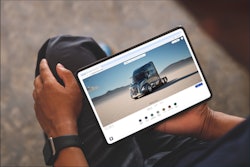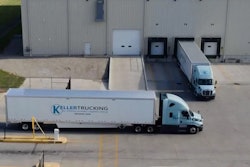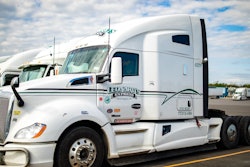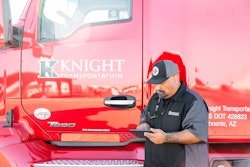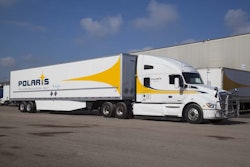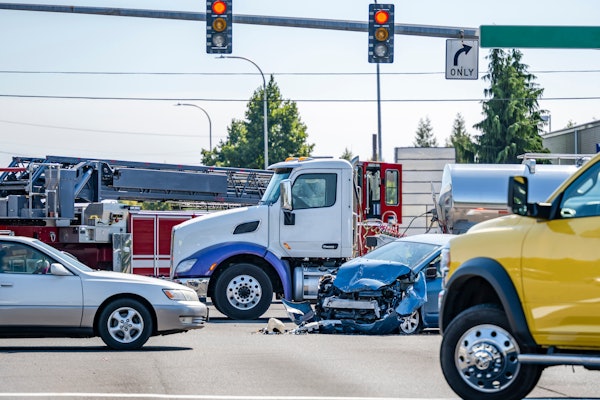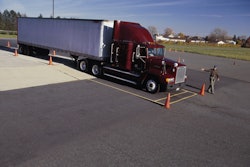CCJ Innovators profiles carriers and fleets that have found innovative ways to overcome trucking’s challenges. If you know a carrier that has displayed innovation, contact CCJ Chief Editor Jason Cannon at [email protected] or 800-633-5953.
Artificial intelligence has infiltrated every industry globally, and transportation has embraced AI more than most. From camera systems to workflow automations, AI has found use cases in motor carriers' back offices, their trucks, and their trailers.
Roadrunner (CCJ Top 250, No. 91), seeing missed pickup figures in the 30% range in the early 2020s, leaned into the implementation of AI and data-driven processes to slash that figure to near-zero.
Tomasz Jamroz, president and chief operating officer, said missed pickups previously were often obscured by various excuses and unverified codes, so the company shifted to a strict, data-driven, binary approach, only counting a pickup as missed if it could be empirically verified, and it implemented an audit group to ensure accuracy.
"Back in the day, people were hiding behind different excuses that would be coded under different criteria – that a customer was closed or something – and nobody would ever go and verify that information," he said. "So what we have done is we have this kind of a zero-excuse policy; very data-focused, very data-driven."
Jamroz said while eliminating excuses was helpful, the goal was to uncover the real problems. "Let's understand where the issue is, because when we understand where the issue is, we know what to fix," he said.
No excuses
Jamroz said the carrier removed from its evaluation of missed pickups any codes or any reasons, "unless our system can verify that this is really a customer request or customer sending us the wrong information and so on.
"What might happen is that a customer will send you today a pickup for yesterday," he said. "So that would automatically appear as a missed pickup. Our system would go and make sure that this becomes available today. It's kind of automatically overwritten and that's going to be tracked, but it is really kind of a raw metric, so we brought that mindset."
An internal audit team acts as a checks and balances system as order data flows through the network and, aided by the data system, verifies that a customer has indeed requested a change, or that a customer has sent the wrong information.
"We have this motto: 'In data we trust' at Roadrunner," Jamroz said. "So we remove all the storytelling, all the excuses, all the reasons why."
The massive drop – from 30% in misses barely 5 years ago to just .5% today – "is mostly driven by processes, change of people and technology. The AI that we introduce now, which is fairly new for us in the area of pickup and delivery, is really how we're aiming to get to the point that we don't have a single missed pickup."
How AI is helping
Roadrunner recently deployed a new pick-up & delivery (P&D) software featuring advanced track-and-trace capabilities.
"AI-powered technology turns uncertainty into clarity and unpredictability into certainty," added Nathalie de Champlain, Roadrunner’s chief transformation officer. "Our ambition is not just to lead the category we created, but to become the most tech-forward carrier in the industry. That means more customers, in more markets, can trust Roadrunner as the best national carrier and it means shippers can move more freight, more reliably, with predictable delivery, faster, with real-time visibility and confidence as we revolutionize what long-haul LTL can be."
Jamroz said he expects AI to take the carrier's .5% missed pickup rate down to zero, setting a new standard for reliability and customer satisfaction in the industry.
"To get it really to zero, you really need to have a better tech," he said. "So what this is going to do is, let's say I get a pickup and the truck broke down. The system automatically will reorganize all my trucks in the network – all the routes in the network – to maximize the chances that the load is still picked up successfully on time.
"It's almost like you're playing the game and you think you're covering with 12 players," he added. "Suddenly I have 11. Well, how do I still cover everything with 11 players, and how do I do it dynamically in real time if I were to use my technology?"
Before the introduction of the machine learning platform, a dispatcher would have to manually reorganize 11 different pickup routes, "and that's going to take you probably half an hour to an hour," Jamroz said. "Considering that you also need to manage other things, that probably can be even more. Now, it's just you press the button and within a few seconds that problem is solved for you."
The agility in reacting to unforeseen circumstances in seconds rather than hours, Jamroz said, is critical as supply chains operate on tight and inflexible timelines.
"Most of the customers are going to close their dock at 4 or 5 p.m. anyway, so you don't have unlimited time," he said.
The P&D's level of optimization can look at the traffic conditions and routes and can quickly reorganize everything at once, while also taking into consideration previously scheduled appointment times and locations – dynamically solving "the traveling salesman problem" better and faster than even the most capable dispatcher.
Added insights, more money for drivers
Customers can see when shipments are picked up and delivered, with pilot markets offering live views of driver location, next stop, and estimated pickup or delivery times. Text and email alerts with account-level subscription options keep shippers informed without manual follow-up.
Roadrunner’s website now, too, provides full tracking visibility across the entire delivery cycle.
Self-service appointment scheduling is also being piloted with new tools that let customers schedule deliveries directly as part of a broader strategy to expand customer-controlled self-service features and functionality.
Building on its early adoption of the NMFTA eBOL 2.1 standard (now powering 20% of all BOL API traffic), Roadrunner has also introduced a new pickup API standard. The company is also piloting freight profile APIs that will provide customers with preliminary visibility into freight charges ahead of similar initiatives currently being designed by NMFTA’s LTL digital council framework.
Jamroz noted the investment in technology was aimed at not only streamlining the customer experience but also at enabling Roadrunner’s owner-operator driver-partners to make more money in less time with lower fuel costs – "benefits that directly translate into faster, more reliable, and more cost-efficient service for the shippers," he said.
The CCJ Innovators program is sponsored by Comdata, ExxonMobil, Fleetworthy and Mack Trucks.



